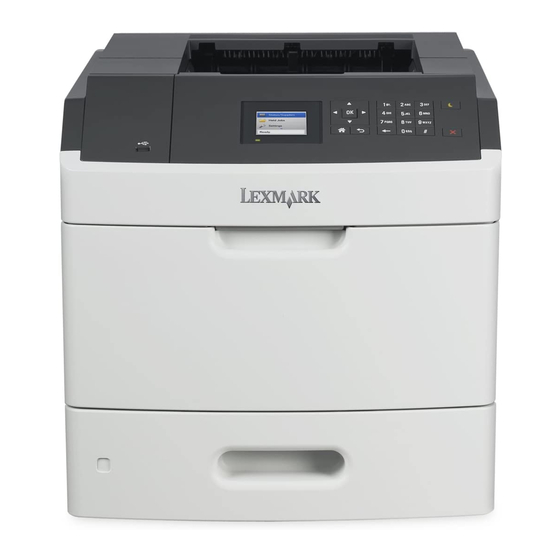
Lexmark MS810 User Manual
Hide thumbs
Also See for MS810:
- User manual (364 pages) ,
- Quick reference (32 pages) ,
- Manual (20 pages)

















Need help?
Do you have a question about the MS810 and is the answer not in the manual?
Questions and answers